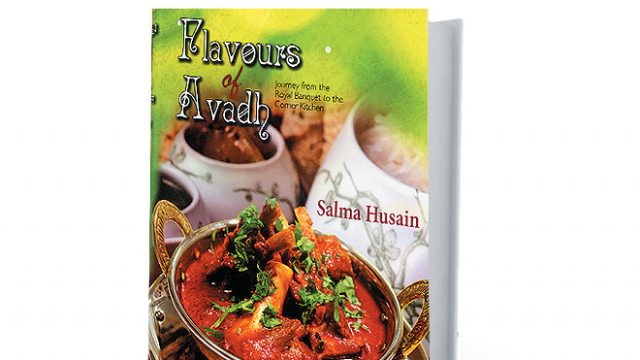Forgive us, dear author, for our doubts — the taste of this pudding was indeed in the eating, and the test of the book in the reading. We can only allude to the unimaginative kebab-biryani-korma-sheermal menus of the ubiquitous Awadhi restaurants all over India, especially its capital. Indeed, this collation of recipes is rather more epic in its historicity and authenticity, and certainly more venturesome of paths rarely trodden in both commercial and home kitchens owing allegiance to the courts of Lucknow.
We misjudged you, and are happy to eat our words now, by way of the Feast of the Nawabi Chandni that you assure us has its origins in Humayun’s court. Though we might prefer some changes to the menu, adding some chicken soufflé, sewrha (Colocasia leaf rolls), Baba Farid ki meethi khichri, murghi gulaabi cooked with rose petal powder, dopiaza borani (mince coated carrots in saffron gravy), ananas ke parathe, khageena bezai mahi (fish roe omelette), and bring us some ande ka halwa. For we needs must have all to properly represent the riyasats and dastarkhwans past and present of Lucknow, a heritage not readily grasped by the contemporary traveller drawn only by the landmarks of Tunday and namash and Bara Imambara.
These are no mincing mythical dishes. For the actual nawabs and nobles of Awadh had heartier appetites for courteous borrowing from other shores, and not just at the Residency; and both common and noble blood could fall prey to typhoid and need a chulao (rice with bone marrow) to feed their convalescence.
Not that the street corners and alleyways are at all neglected, for the maze of street vendors is well mapped, studded with the most excellent and accessible highlights. But this cookbook is more about sampling lesser-known — yet hardly lesser — banquets of historic legacy. The palaces, feasts and feats of Mahmudabad, Kotwara, Tirwa, Sheesh Mahal, Sitapur, Faridi and Zaheer are the meat of its matter. The accompaniments are especially appetizing — the festivities and events of these families which continue to contribute to the tourist’s calendar and the kitchen chronicles that still inform this sumptuous buffet.




